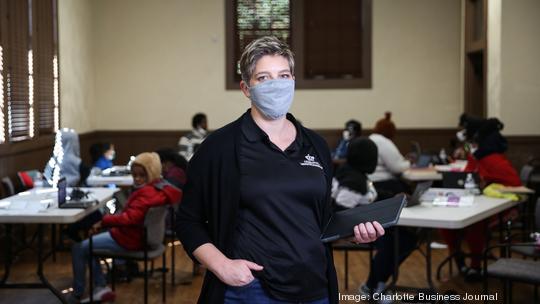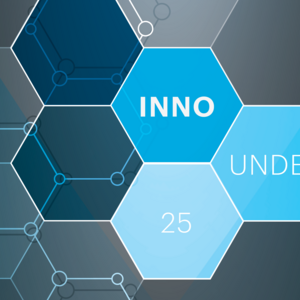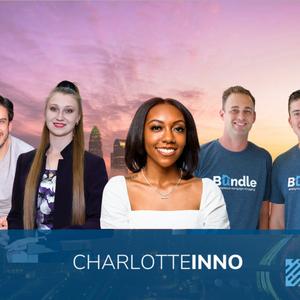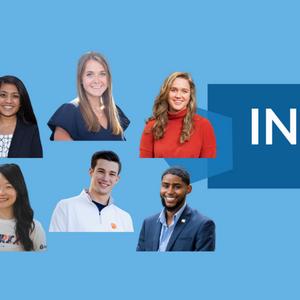
The city of Charlotte had a plan underway to build a "smarter," more technologically advanced ecosystem long before Covid-19 was on anyone's radar.
The initiative, called Smart Charlotte, was based around the desire to improve city services, infrastructure, sustainability and quality of life for residents. Rebecca Hefner, the city's data and analytics officer, said the Smart Charlotte plan would enhance the city in ways that would enable greater innovation, as well as widespread digital access and inclusion.
Once the pandemic hit, however, the initiative shifted its focus to a singular goal, implementing public Wi-Fi as quickly as possible through a new initiative called Access Charlotte. Hefner said they knew they needed to focus on areas with the lowest connectivity rates because students and adults were now learning and working remotely.
"Covid-19 sent us all home in the middle of March and radically changed how we were working, how our students were accessing learning and how all of us were interacting with one another," she said. "That was a real cause for urgency for the city, as a whole."
Hefner sat down with the Charlotte Business Journal recently, to discuss Access Charlotte and how implementation of public Wi-Fi will have a lasting impact on residents.
What is Access Charlotte, and how are those involved in the initiative working to close the digital divide?
Access Charlotte is not a standalone initiative. It’s part of a broader umbrella that we are calling Smart Charlotte. That is broadly intended to leverage technology and data to benefit residents and businesses in Charlotte. The initiative began last November under the umbrella of our digital alliance with Microsoft. One of the pillars of that project was public Wi-Fi. We were working over the spring months of 2020 to identify a couple of potential pilot locations where we could implement public Wi-Fi and test it for scaling up. We were looking at several city of Charlotte-owned public spaces and working through the details and all of the logistics of how you would potentially implement public Wi-Fi.
How did Covid change the program’s course?
Even before the CARES Act was passed, our council was pushing for the city to engage more around digital inclusion and digital equity. With the opportunity that arose with the CARES funding, Charlotte City Council allocated an initial $1.5 million for the implementation of public Wi-Fi. That includes the multifamily residential spaces, public spaces, as well as public Wi-Fi on CATS buses and eventually also on the light rail. The funding, just for the public Wi-Fi, reaches almost 2,000 households in residential areas, not including anyone who might connect in one of the public spaces. We got started on that work, partnered broadly across the community with other stakeholders like Mecklenburg County, Charlotte-Mecklenburg school district and Digital Charlotte, as well as other funding and housing partners, to identify the locations where we could implement public Wi-Fi. Honestly, we’re behind. This issue did not arise because of the pandemic. Like so many other inequities, the pandemic made it much more apparent.
Access Charlotte has received a total of $3.25 million in CARES Act funding from the city. Can you explain all of the ways in which that money is being used?
In addition to that initial investment of $1.5 million for the public Wi-Fi network, council also allocated $1 million to the Charlotte-Mecklenburg Schools Foundation, and that allocation provided internet connectivity to the hot spots that CMS provided to students for remote learning. $536,800 was allocated for Community Learning Labs for hardware through our partnership with United Way. The needs include equipment and then also skills, knowledge and tools to make the most out of that equipment through the Access Charlotte program. They’ll be providing grants to community organizations to purchase computers, devices and other equipment, particularly for remote learning in community centers. For example, the Grier Heights Community Center. We have $236,200 to fund the establishment of the Digital Navigators Program through our partnership with Digital Charlotte with Queens University. That program will create curriculum and training materials to train digital navigators — people who you can work one-on-one with to learn basic digital skills, find affordable devices or home internet. We’re standing up a hotline, so anyone in Charlotte will be able to make a phone call and access a digital navigator with questions all the way from, ‘I need to know where I can get a low-cost device,’ to ‘I need help setting up my email,’ to ‘I want to build digital skills.’
Why is public internet access so critical for certain parts of Charlotte and Mecklenburg County?
If you think about everything that you or I do during the day, almost all of it, even prior to the pandemic, relied on internet access in some way. So, it’s not just the current urgent need for access for students for remote learning or for adults to be part of the remote workforce, but every person, every day to be a part of our community, needs access to the internet. It’s the primary path where people are engaging in community and civic life, finding work and building skills. Not everyone can afford it, and when you look at people who are balancing the costs of basic needs, maybe they are purchasing internet and have had to sacrifice something else. We do have large areas in Charlotte where people do not have access. It’s surprising to people, I think, but we’re still around 20% of the Charlotte population that’s not connected to broadband from home.
We really tried to identify areas where there’s low connectivity and focus our efforts there. Quite a lot of what we’re doing is aligned with the city’s Corridors of Opportunity effort, so we're looking at areas like the North Tryon corridor, Statesville Avenue corridor, West Boulevard, Freedom Drive, Wilkinson Boulevard. Most of the locations selected for this initial pilot are within or near those corridors of opportunity.
What stage is the project in, and do you anticipate it will be completed on time?
The team has made tremendous progress over the last couple of weeks. The Wi-Fi is complete and turned on at the Grier Heights locations and at Mezzanine on Freedom. Crews are near completion at Sharon Oaks, McNeel, The Gables and Alexander. Work begins this week and next at Stevenson, Renaissance West, Little Rock, Retreat at Renaissance and Harmony Place. I am thrilled to report that we are currently on pace to have the projects completed on time. To be eligible for the CARES funding, the work has to be completed by Dec. 30. We know some of the projects will continue into January and those will be funded by other funding streams.



